Cadillac’s Escala Concept Car
Our exclusive look behind the scenes of a vehicle brought to life
Cadillac has been on a five year journey expressing three driving experiences and demonstrating the brand’s evolution while also tracking back to its luxury roots. We’ve been fortunate to see the debut of each car in the fitting surroundings of the Pebble Beach Concours d’Elegance, America’s most prestigious event celebrating automotive history, design and performance (and its many adjacent events). This year we’ve had the exclusive opportunity to follow the car’s development, to get behind the scenes and experience a creative process that few outsiders (let alone journalists) have witnessed. Visiting the GM design studio in Detroit, where the car was conceived, designed and created, several times, we met the team who brought the Escala to life, and we are proud to present the story on its launch in the slideshow above and story below. We learned so much throughout this journey—too much, in fact, to include in just one story. This is the overview and in subsequent features we will dig deeper into the car’s many details.
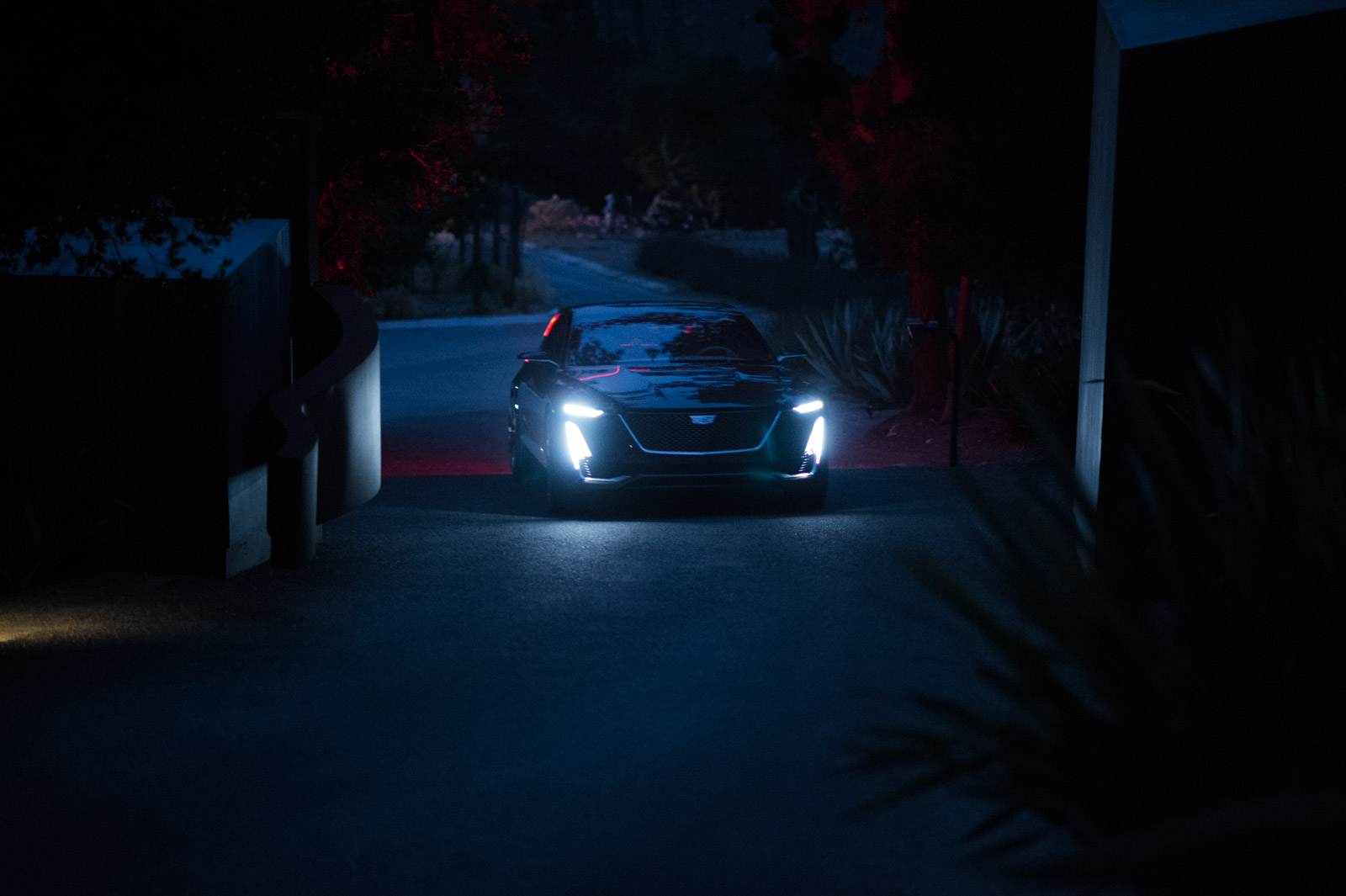
Back in 2007 or so, as Cadillac sought to regain relevance in the American luxury market and begin developing a presence in the global market, the brand crafted a strategy for creating three different concept cars, each representing a different driving experience evoking a key aspect of the brand: the journey, the drive and the arrival. Andrew Smith, Cadillac’s Executive Director of Global Design, says, “We want to use this as a way to talk about the fact that Cadillac is always looking forward and always evolving, and if you think about the three cars put together, you’ll see that Cadillac has evolved, that it’s continued to push forward. They’re not a set of three cars that look like they’re from the same time period and that’s a good thing for us.” That the Escala makes its debut during the Concours is fitting, as it was Smith’s inspiration from several vintage cars shown here that helped inform the development of his design brief.

The Ciel convertible made its debut in 2011 and spoke to the journey, specifically one celebrating California and the outdoors, the return of the true four-seat convertible and a drive meant to be shared with friends. In learning about the car we became intrigued by the story of a 300-year-old tree trunk that became a central theme of the car’s interior, and it prompted us to ask the Cadillac team if we could see the next concept car as it was being developed. Our request was politely declined.
Two years later in 2013 the Elmiraj coupe won our hearts in its celebration of the grand American luxury touring coupe, speaking to the brand’s passion for the drive. We kept asking if we could see the next concept car being designed, and our requests were again declined.

Today the brand makes an equally impressive statement about the arrival. The Escala concept speaks to the brand’s aspirations and capabilities to compete in an even higher segment of the luxury market, one that American cars haven’t participated in in decades. While neither the Ciel nor the Elmiraj made it to the showroom floor, the Escala previews styling, technology and interiors of cars currently in development, and if the demand is strong enough, a realistic look at what could be the first six figure flagship for the brand. Importantly, it’s also reflective of the brand’s need to tell its evolving story, reach a new audience and to consider the impact of publications like ours, the impact of social media, and people’s desire to not just see and be told but to feel like they are part of the story. This time, our repeated requests were finally met with, “This feels like the right time to do something like this.”
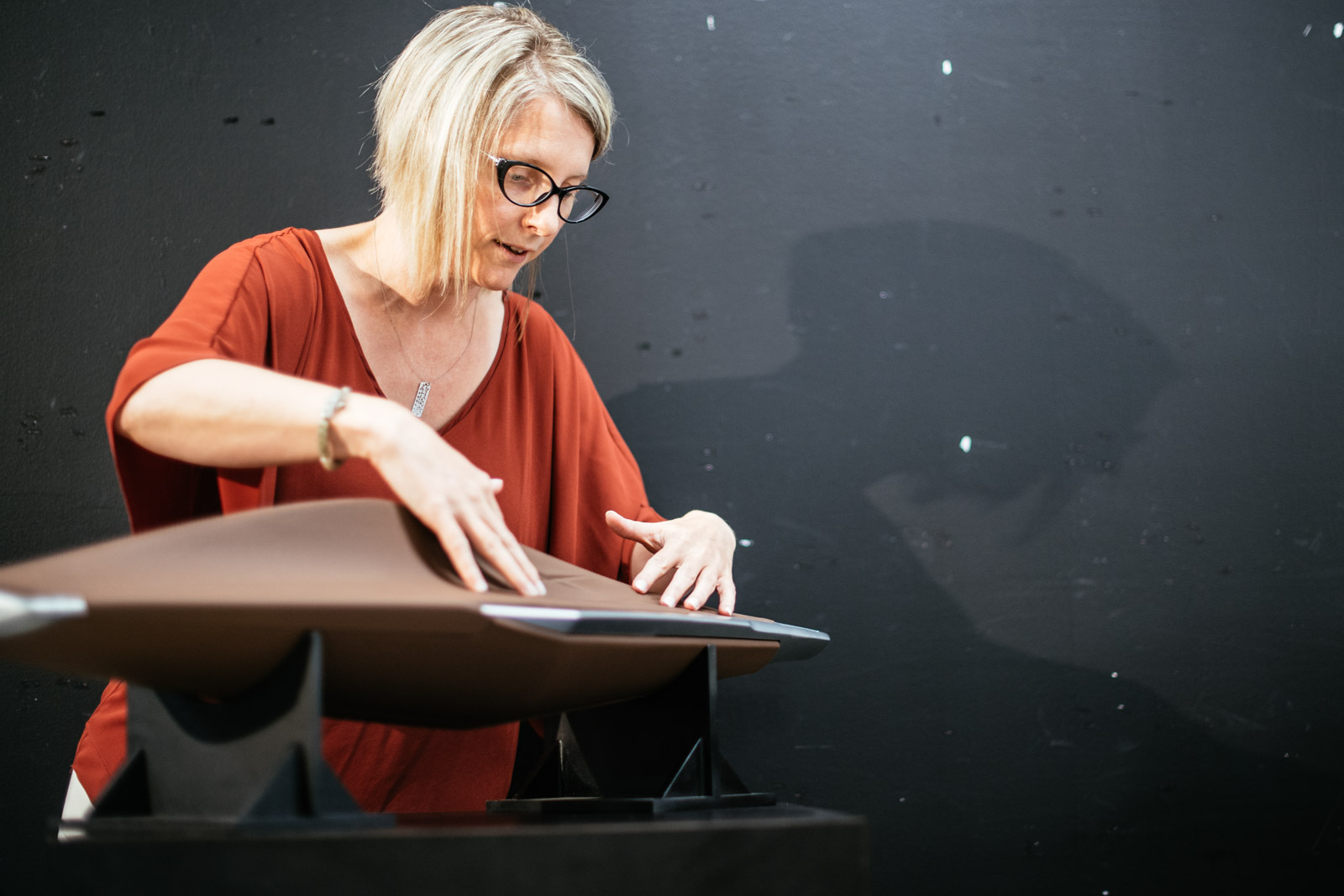
Though the trio of concepts defining the journey, drive and arrival were defined at the outset, the cars themselves were not. It was only a year ago that Smith sent the brief out to the design team across studios, with designers competing to envision the car that would become the Escala. Jennifer Kraska, Cadillac’s Interior Design Manager, says, “The design brief that was given for the overall project was meant to be two worlds coming together… and how those worlds can exist in the same space.” The car needed to introduce “the new Cadillac design philosophy that’s aligned to our brand values, boldly capturing the sense of arrival, evolving the form language that’s both expressive and provocative, yet timeless. Sculpturally sophisticated. It showcases advanced lighting and user experience with breakthrough originality and artistic integration, and demonstrates precision and ingenuity in craftsmanship,” she adds.

Two young designers in the Detroit studio, Frank Wu and Aaron Riggs, submitted concepts that Smith felt best spoke to the notion of arrival, and he asked them if they could collaborate to develop and refine their visions.

The Escala was born, a car that was inspired by several of the antique cars that had impressed Smith over the years he’d been to the Concours d’Elegance, those that had distinct expressions for the driver up front and the passengers in the rear. He believed the Escala needed to capture that spirit and connect to our desire to both drive and be driven; to have two personalities in a cohesive container.

Though we clamored to be at the first design briefing (next time, hopefully) we were brought in to the Escala’s journey several months ago, when Sharon Gauci, Director of Global Color and Trim at GM and Carrie Crawley, Cadillac’s Global Strategic Design Manager, walked us and designer Jason Wu (a brand partner who created a set of accessories presented with the Escala) through the car’s brief and shared its design, material strategy, and importance to the brand. Gauci emphasized the combination of leather and fabric, a fresh take on material integration and also one that demonstrates Cadillac’s desire and ability to deliver more refined interiors. Crawley spoke to the high end of the luxury market, one that the brand is keen to engage in.
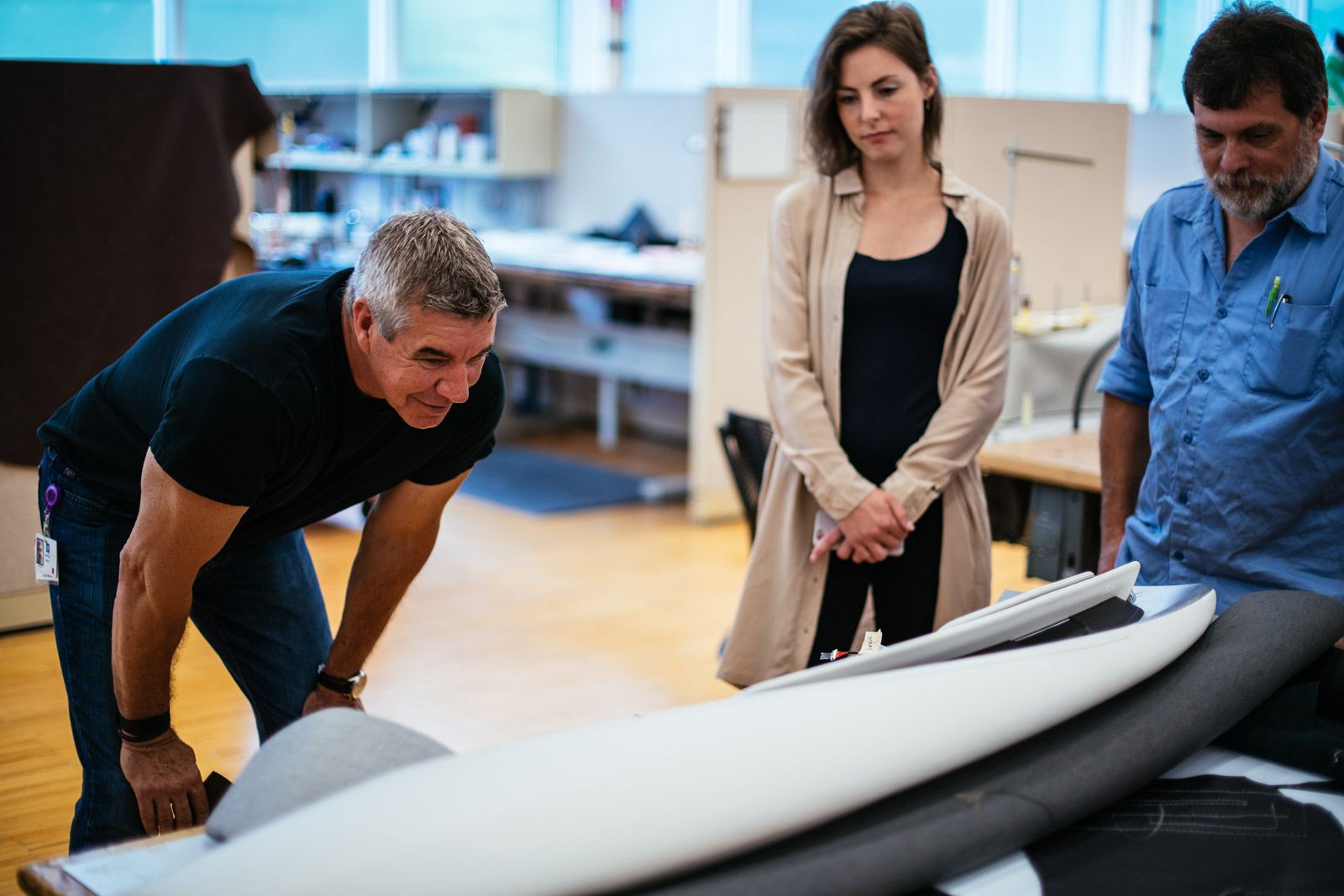
In early June we visited the GM Design Center when the then still unnamed car was being assembled for the first time, spending the day with a deep dive into all aspects of the car and the many, many people involved in bringing it to life—interior and exterior design, fabrication, communications, and the many talented craftspeople in the studio who bring the wood, leather, metal and fabric elements to life by hand. The Escala represents the best of the company’s talents coming together to showcase the brand’s vision. What struck us was how the project’s core team, including some of the youngest and newest talent, worked hand-in-hand with some of the company’s most experienced. That collaborative creation was honest, inspired and occasionally spirited.

Taki Karras, Cadillac’s Exterior Design Manager, walked us through the car, noting that the Escala completes the experience trilogy, and that despite the time between the design of the concept cars that it was important to capture the spirit of the brand and the physical proportions. “What you’ll notice on the front view of the car, the big difference between where we have been in the past and where we are now is with the graphics on the front in terms of the lighting signature,” he says. “On this vehicle we’re introducing a bit of a horizontal element into the Cadillac design language, and what that does is allows us to get your eye to walk all the way around the car and have more harmony in the design.” Adding, “We really wanted to play up proportion first and foremost as your first read, then this clean beautiful surfacing with very high-tech details that give a modern aesthetic.” He commented on one of those tech details, the use of OLED lighting, which allowed the designers to place lighting where they couldn’t previously, noting the unique tail lights and their laser etching. You can’t help but notice the sculptural element that supports the front doors, which he notes creates a “beautiful piece of restrained artwork that has a functional purpose.”
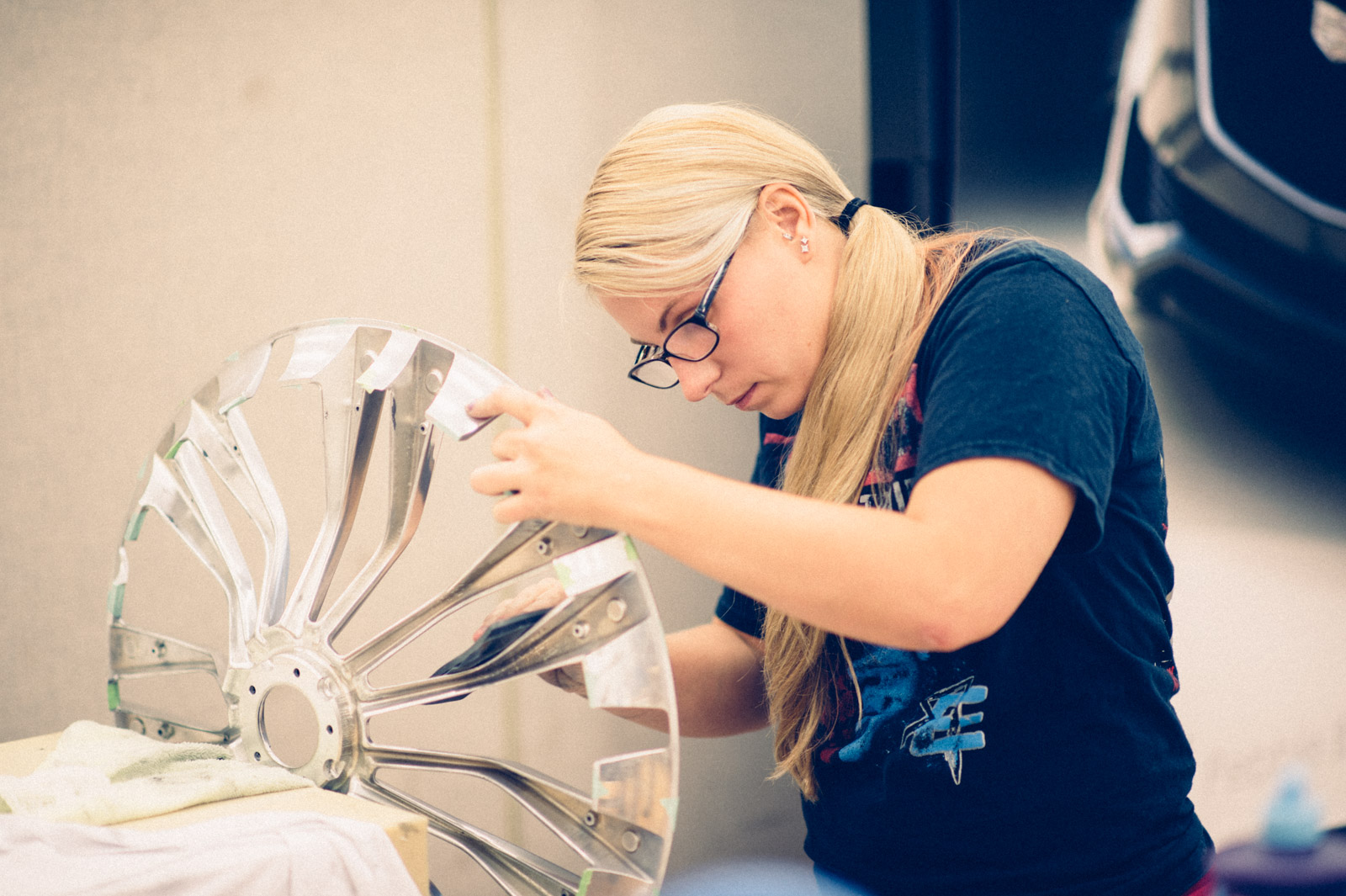
The wheels and tires received equal attention as well. Cadillac worked with Michelin to create the 20” tires, which feature the Cadillac chevron in the original tread design. The wheels have a milled aluminum piece on top, allowing the spokes to reach the center and to hide the lug nuts. The components for the wheels were all designed and milled in house.
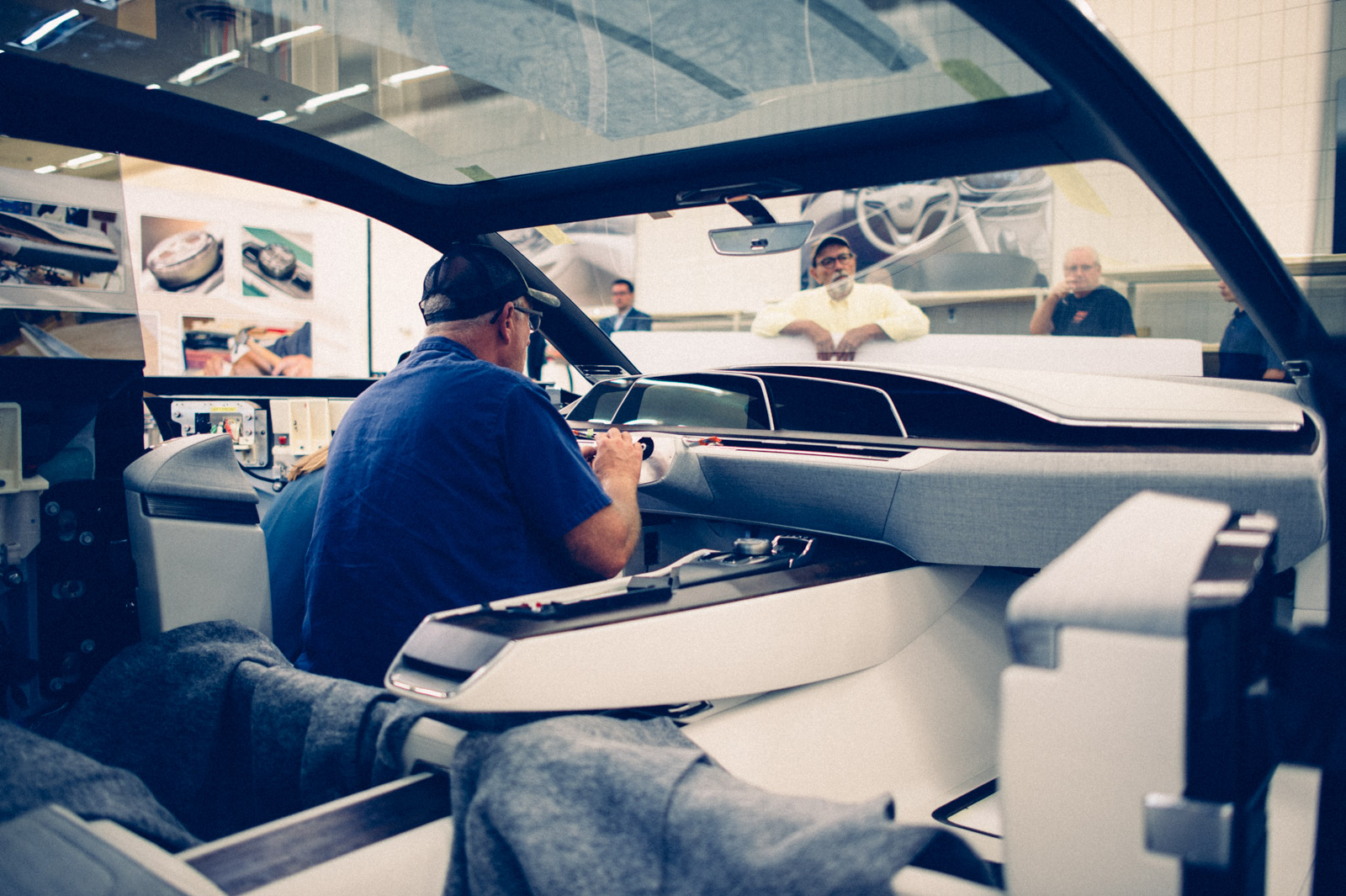
Simplicity is always harder than it looks, and the Escala’s exterior and interior lines took a lot of effort to achieve. One major evolution for the interior is the adoption of curved OLED displays, which permit the screens to float and become part of the design instead of needing to be designed around. Kraska excitedly notes that “The OLEDs afford this flexibility and shape for us… designer freedom, and it is like heaven.” They allow the displays to be wrapped in leather, even embossed with the Cadillac crest—a nice touch. “Luxury doesn’t have to shout or scream, it can whisper,” she notes.
Luxury doesn’t have to shout or scream, it can whisper
The displays (smaller versions of which appear on the rear of the front seats for back seat passengers) provide insight into how the brand is thinking about information design and user experience. The Cadillac Goddess, designed by William Schnell in 1930, debuted as an elegant radiator cap. After a lengthy pause she’s back, this time etched into the glass in the controller that operates the car’s information and entertainment systems.

One of the things most noticeable about the Escala is its uninterrupted interior space—there’s no “b pillar,” the metal that typically supports the car’s roof between the seats. To compensate there’s a “mini bulkhead” that adds support and stability. Seating is another stand out feature for the car, both for the way the front and rear seats are simply and elegantly designed as well as for the way they showcase the integration of the leather and fabric used to impressive and dramatic effect.
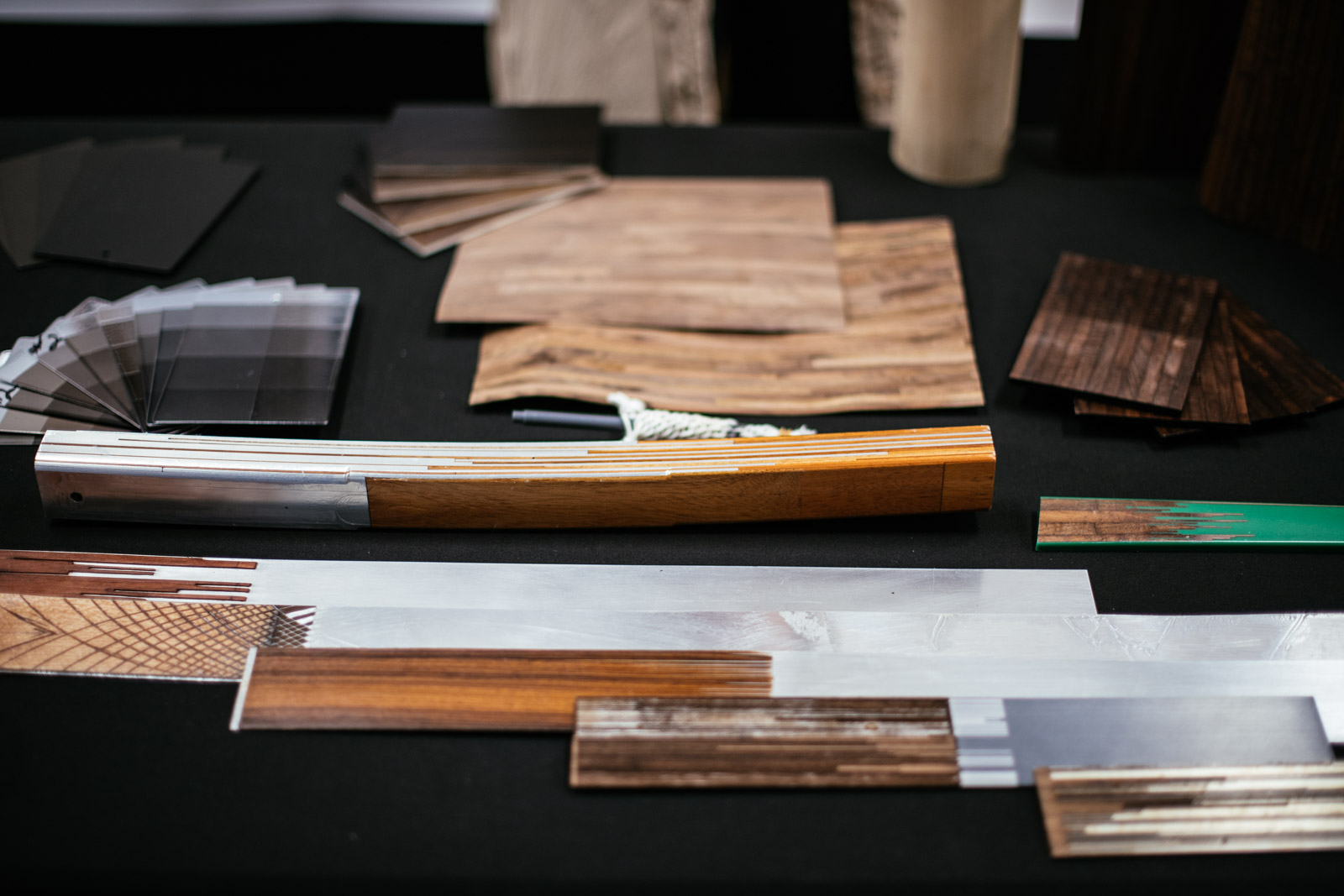
Speaking to the transition between the driver and rear passenger seats, one of the car’s most interesting features is a piece of trim that transitions from metal to wood, something that the designers and craftspeople worked on for months, revising through several iterations. In an effort to illustrate the effect they were looking for Laetitia Lopez crocheted string and mounted it around a rod, showing how the knots could expand and contract. She, along with Hannah Dunbar (two of the color and trim team’s newest designers) led the car’s refreshingly modern use of materials (on which we’ll dedicated a future story).
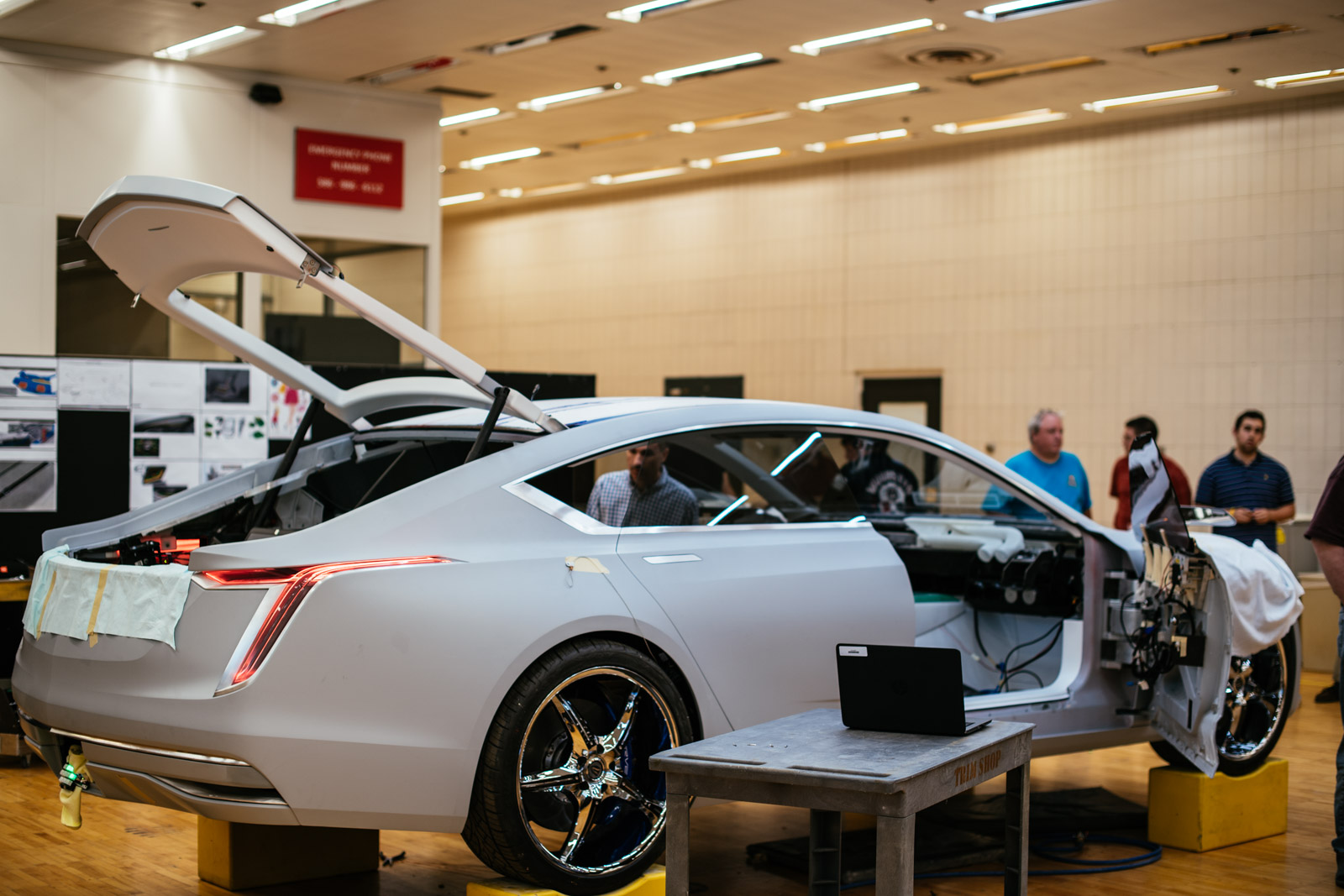
It was great to be present when the team was able to see the car come together for the first time, and with only 10 weeks before it had to be on a truck to California the clock was ticking and work was happening at a frenetic pace. Of course, the day-to-day demands don’t stop either, and the team, who is working on the designs for the next five or so upcoming vehicles worked that much harder to bring the Escala to life. Building a show car is a rallying cry, a team building experience, a forum for design and innovation and one of marketing’s sophisticated tools to signal a brand’s evolution.
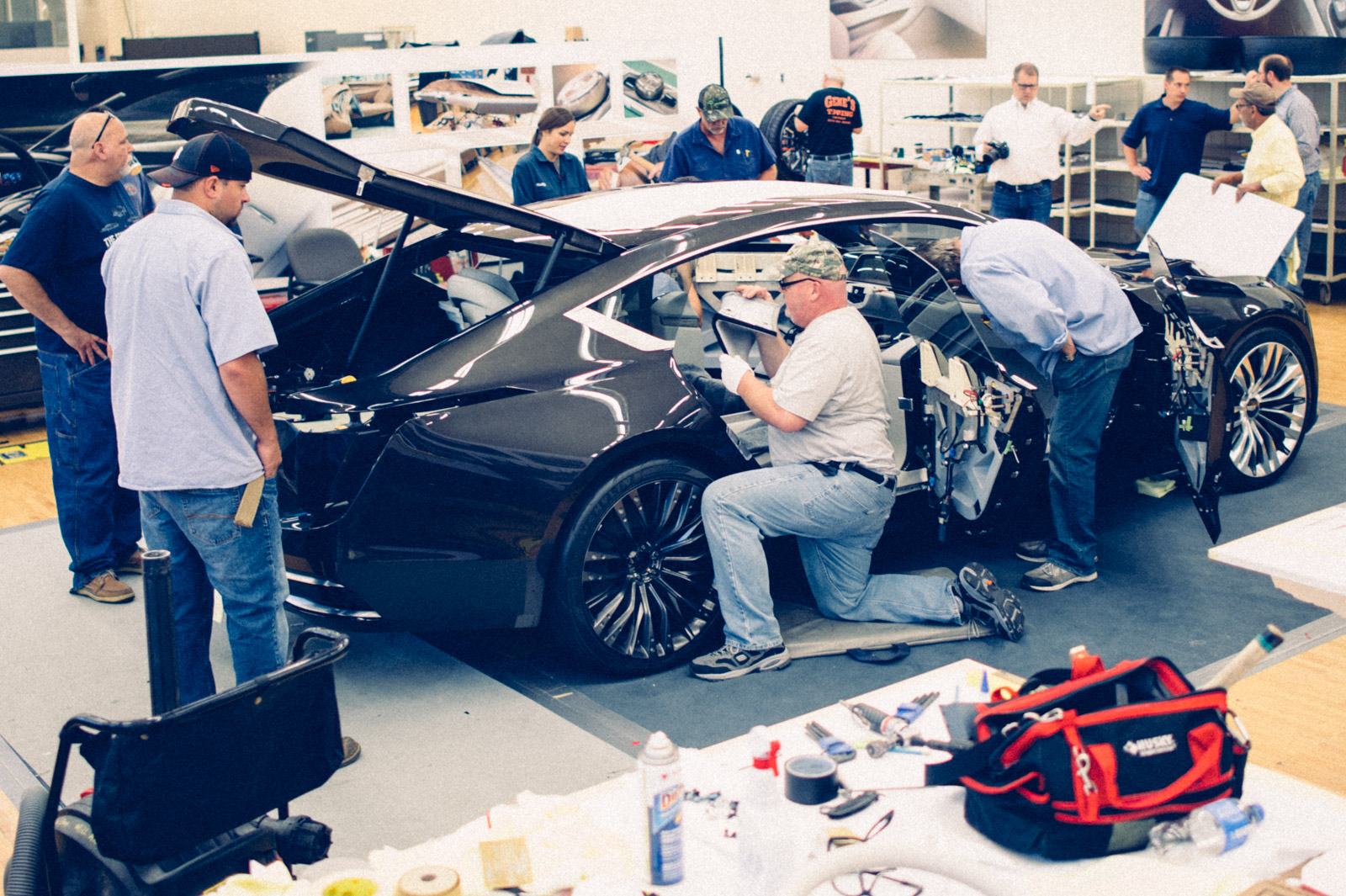
Our second visit was in early August, and by then the car had been painted nine layers of “Gaia” a color that changes with the light. Gauci notes that it’s an “alchemy of various speciality and standard metallics with a dye in the clear (coat) as the umami.” Nearly all of the car’s components had been completed, and final assembly was underway. Last minute details and unexpected issues were addressed, and the excitement was building. In two weeks the car would be on its way to Carmel, California for all to see.

Seeing the enormous effort involved in building a functional custom car gave us a new appreciation for the complexity of the auto industry, something most of us take for granted nearly every day, and for the artistry involved in bringing a vision to life in sheet metal. While grand gestures are important, it also reinforced that often what’s most special about an object and its design are the details and the passion, dedication and hard work required to bring it to life. Stay tuned for future stories on the Escala.

Images by Josh Rubin
Watch our Livestream from the unveil in Carmel CA
Cadillac Escala concept car unveil test
Posted by Cool Hunting on Thursday, August 18, 2016






























































